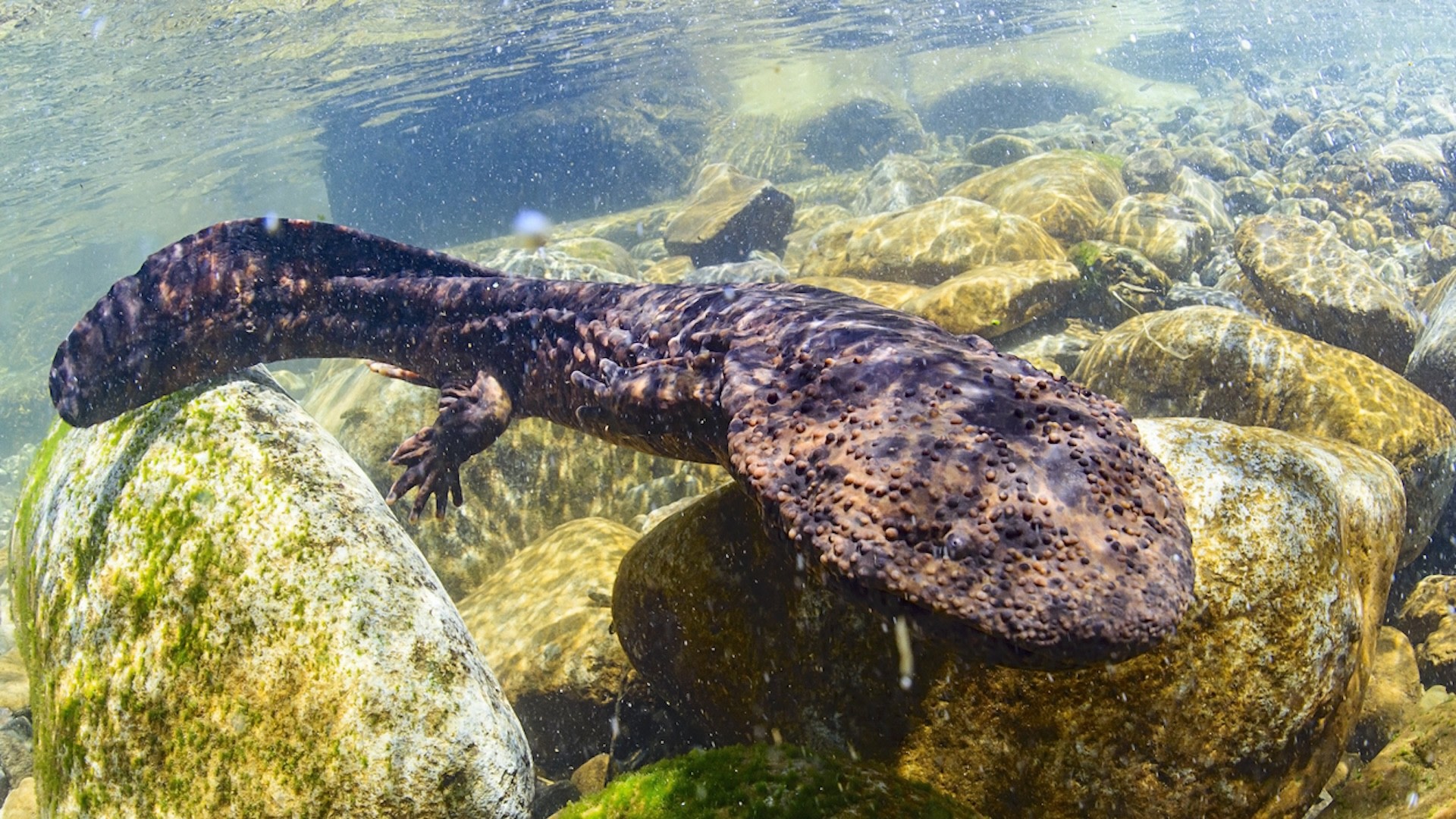Japanese researchers recently discovered four critically endangered salamander species while searching for a different critically endangered salamander species, the New York Times reported.
The researchers from Kyoto University were looking for purebred Japanese giant salamanders, a species that has become increasingly difficult to find. Chinese salamanders have been introduced by humans and crossbred with the Japanese ones. Currently, most salamanders found in the wild are hybrids.
Purebred Japanese giant salamanders have been branded a "special national treasure" by the Japanese government.
However, purebred Chinese giant salamanders (of which there are several types) are also critically endangered, mostly from poaching and habitat loss. In the course of their search for Japanese purebreds, the Kyoto University team accidentally found two living Chinese purebreds, potentially aiding in Chinese conservation efforts.
Both of the living purebred Chinese giant salamanders were being kept in Japanese aquariums, with the owners unaware of how rare they were.
"We never expected to find one of the rarest amphibians in the world," said Dr. Kanto Nishikawa, a herpetologist at Kyoto University who led the research team, per the Times.
Animal species are under threat from human activities such as pollution, habitat loss, and poaching — and amphibians such as frogs, toads, and salamanders are even more vulnerable than most.
Amphibians have permeable skin, which means they absorb pollutants through their skin and are especially negatively impacted by rising temperatures. One study found that nearly 2,900 amphibian species are vulnerable, endangered, or critically endangered.
In Mexico, the axolotl, a fish-like salamander, has seen its population density plummet by 99.5%. While every species is worth protecting, the axolotl is crucial to certain types of medical research, as it has the ability to regrow not only its limbs but also its lungs, heart, jaw, spine, and even parts of its brain.
One of the Japanese researchers neatly summed up their reasons for wanting to study and help conserve these critically endangered animals.
"Salamanders are big, and they're cool," Sena Ishikawa, a master's student studying salamanders at Kyoto University, told the Times. "I just love them."
Join our free newsletter for cool news and cool tips that make it easy to help yourself while helping the planet.








